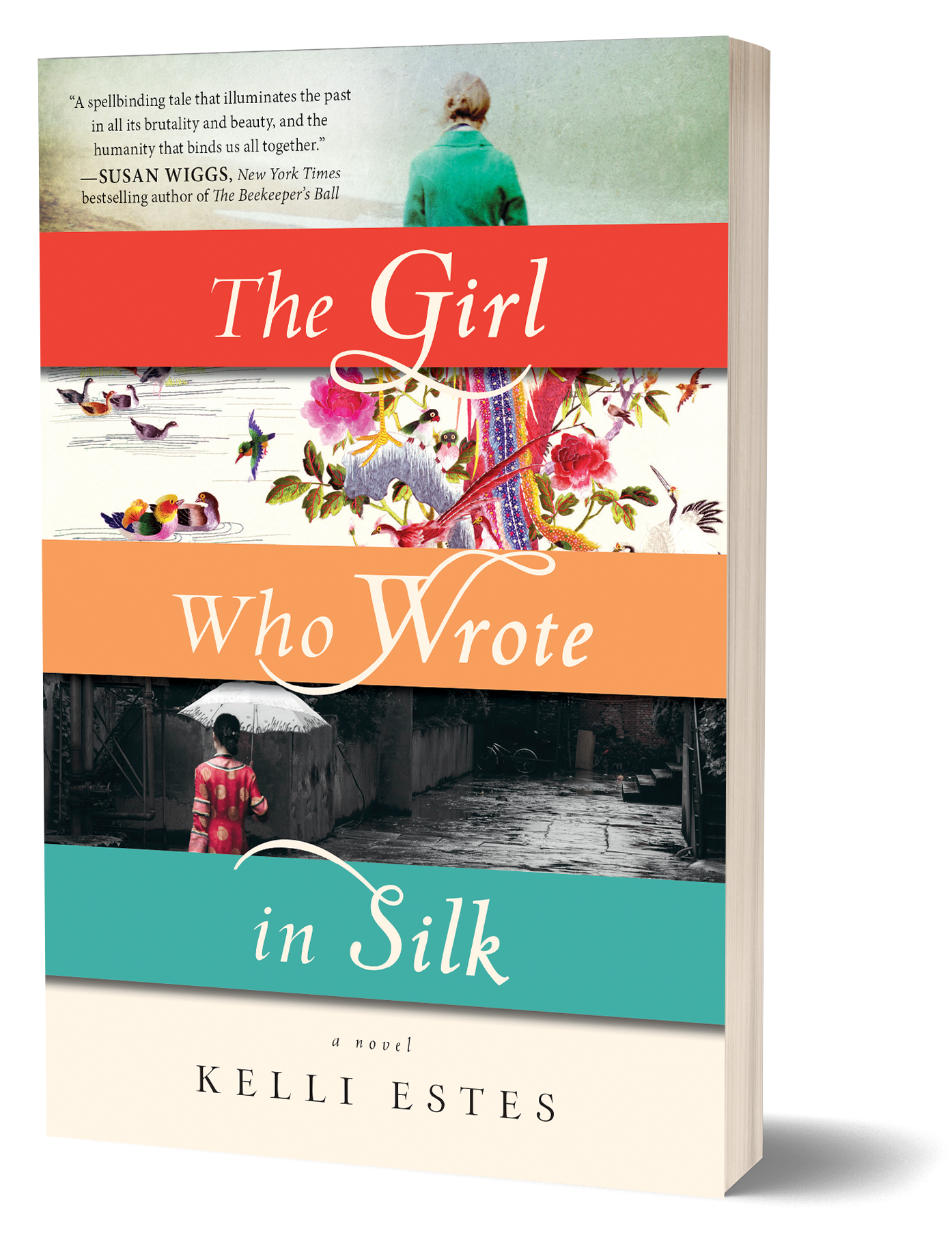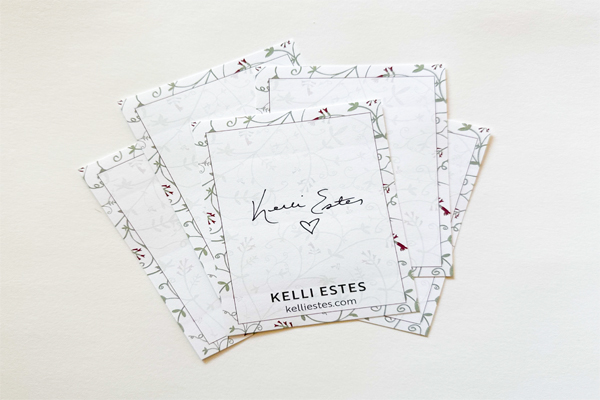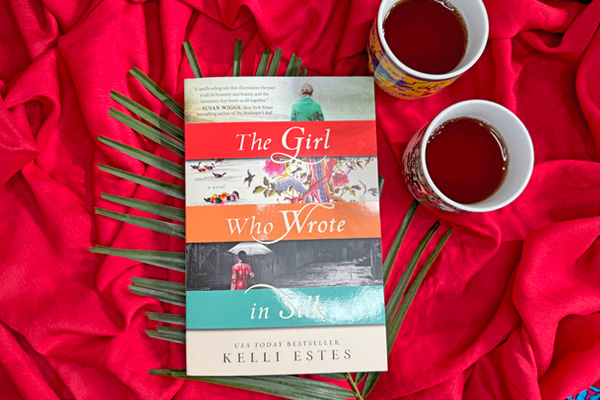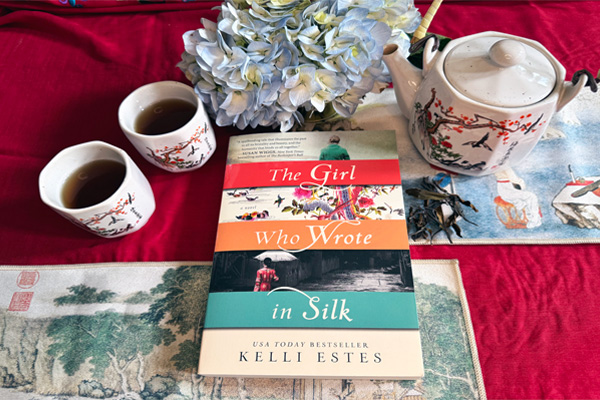
The smallest items can hold centuries of secrets…
As Inara peels back layer upon layer of the secrets the sleeve holds, her life becomes interwoven with that of Mei Lein. What Inara uncovers is a tragic truth that will shake her family to its core—and force her to make an impossible choice. Should she bring shame to her family and risk everything by telling the truth, or tell no one and dishonor Mei Lien’s memory?
Inspired by true events, Kelli Estes’s brilliant and atmospheric debut serves as a poignant tale of two women determined to do the right thing, and the power of our own stories.







“Carefully crafted and perfectly paced, the novel takes readers on a deeply satisfying, memorable journey. Part mystery and part romance, the novel is also a fascinating look at an often forgotten period of Pacific Northwest history and a moving reminder of the stories we all share.” ~ Booklist
“The Girl Who Wrote in Silk is a beautiful story that brought me to tears more than once, and was a testament to the endurance of the human spirit, and the human heart. A powerful debut that proves the threads that interweave our lives can withstand time and any tide, and bind our hearts forever.” ~ Susanna Kearsley, New York Times Bestselling Author
“The interconnected lives of women a century apart is at the center of Estes’ tragic yet uplifting novel. The fast pace allows readers to quickly change gears from one time period to another. Estes sheds light on a dark period in Seattle’s history that is sure to interest those seeking unusual historical details long hidden from history books.” ~ Romantic Times
“Vibrant and tragic, The Girl Who Wrote in Silk explores a horrific, little-known era in our nation’s history. Estes sensitively alternates between Mei Lien, a young Chinese-American girl who lived in the late 1800s, and Inara, a modern recent college grad who sets Mei Lien’s story free.” ~Margaret Dilloway, Author
Reader and Book Club EXTRAS
Welcome!
Dear Readers,
Several years before I started writing The Girl Who Wrote in Silk, I’d read a published diary by an early settler on Orcas Island in the San Juan Islands of Washington State, near where I live. In this diary – The James Francis Tulloch Diary 1875-1910, edited by Gordon Keith – I read of a smuggler who, it was rumored, had a boatload of Chinese people he was smuggling into the US from Canada when he saw the revenue cutter coming close. Rather than getting caught with his illegal cargo, he brought the people on deck, bashed their heads with a club and shoved their bodies overboard. Mr. Tulloch goes on to say that he knows this man, and he believes the rumors.
At the time that I read that, I didn’t know about the Chinese Exclusion Act of 1882 or why Chinese immigrants could not legally enter the country. Those questions, combined with the horror that human beings were treated like objects to be disposed of, stayed with me as I wrote other stories.
I wrote five full-length manuscripts that never got published, despite my best efforts, and I was losing confidence that publishing novels was something I could do. I tried to find another career path to pursue, but I kept coming back to writing. It was in about 2010 that I sat down to figure out my next book and I remembered this story about the smuggler and his murder of Chinese people. I dove into research and learned so much about the terribly racist policies and laws of this era, and I learned that towns all up and down the west coast actively drove out the Chinese people primarily because they saw them as “stealing” jobs (when, in actuality, they were working for the best wages offered to them, which was still incredibly lower than what any white person would accept).
I had already decided by this time that I wanted this book to be dual-timeline, meaning that it was both historical and present-day, and I knew I wanted to set the stories in places that I loved – Seattle and the San Juan Islands. I was sad to learn that the people of Seattle also tried to drive all Chinese out of town. This is when the character of Mei Lien came to life. I knew she would be brutally driven from her Seattle home, just as so many were that terrible day in 1886. But here is where I strayed from the true history. You see, in most towns such as Tacoma to the south, all Chinese people were successfully driven out and their homes and businesses destroyed. In Seattle, though, the territorial governor intervened and offered the Chinese people protection. An angry anti-Chinese mob was forcing the Chinese people to the wharf and onto a ship. Soon, however the ship’s captain was charged with illegally detaining people and ordered to appear in court the next morning. Overnight, all Chinese people on the ship and in a nearby warehouse were protected by armed guards while mobs of agitators roamed the city. In court the next morning, the Chinese people were informed that they could stay, if they chose, and they would be protected. Most chose to leave. Of those who stayed, they were escorted back to their homes by armed guards who faced a tense standoff in the street. One rioter was killed, but no Chinese people were injured. Martial law remained in the city for months.
Because Seattle was an exception, I wrote the story in The Girl Who Wrote in Silk to be more representative of what happened in other towns and cities where no one intervened on behalf of the Chinese people. I hope you forgive my use of literary license to tell the story in a way that truthfully represented the horrors of that time, even though it did not fully represent Seattle’s history.
I wrote Mei Lien’s story first, and then I had to figure out what present-day character would be impacted by this history. Thus, Inara was brought to life. She finds an intricately embroidered garment hidden away in an old family property and, while researching what it is and where it came from, learns about Mei Lien, the horror of what happened in Seattle, and how her own family was involved.
I love stories that bring history to light and show how it is still so relevant to our lives today. I hope The Girl Who Wrote in Silk does that for you, and I hope that you think of Mei Lien and her family as you look at all that is happening in the world today.
Thank you for reading this, my debut novel. It is because of your support that I get to keep doing what I love.
Happy reading!
Kelli

Free Signed Book Plate
The next best thing to a signed book is a signed book plate to stick into the book (or onto your Kindle). Here’s how to get one!

Discussion Questions
A printable PDF you can take to book club!

Book Club Meeting Ideas
Here are some fun ways to enhance your book club meeting, including recipes!

Bibliography/Further Reading
In case you want to dive into research on your own, here’s a list of some of my sources.

Invite me to Your Book Club Meeting
Here’s how…





 Get FREE print-at-home bookmarks I designed just for you, and join my community of readers interested in book events, giveaways, behind-the-scenes info, and more. I only send a newsletter when I have something interesting to share and I will never give your contact info to others.
Get FREE print-at-home bookmarks I designed just for you, and join my community of readers interested in book events, giveaways, behind-the-scenes info, and more. I only send a newsletter when I have something interesting to share and I will never give your contact info to others.